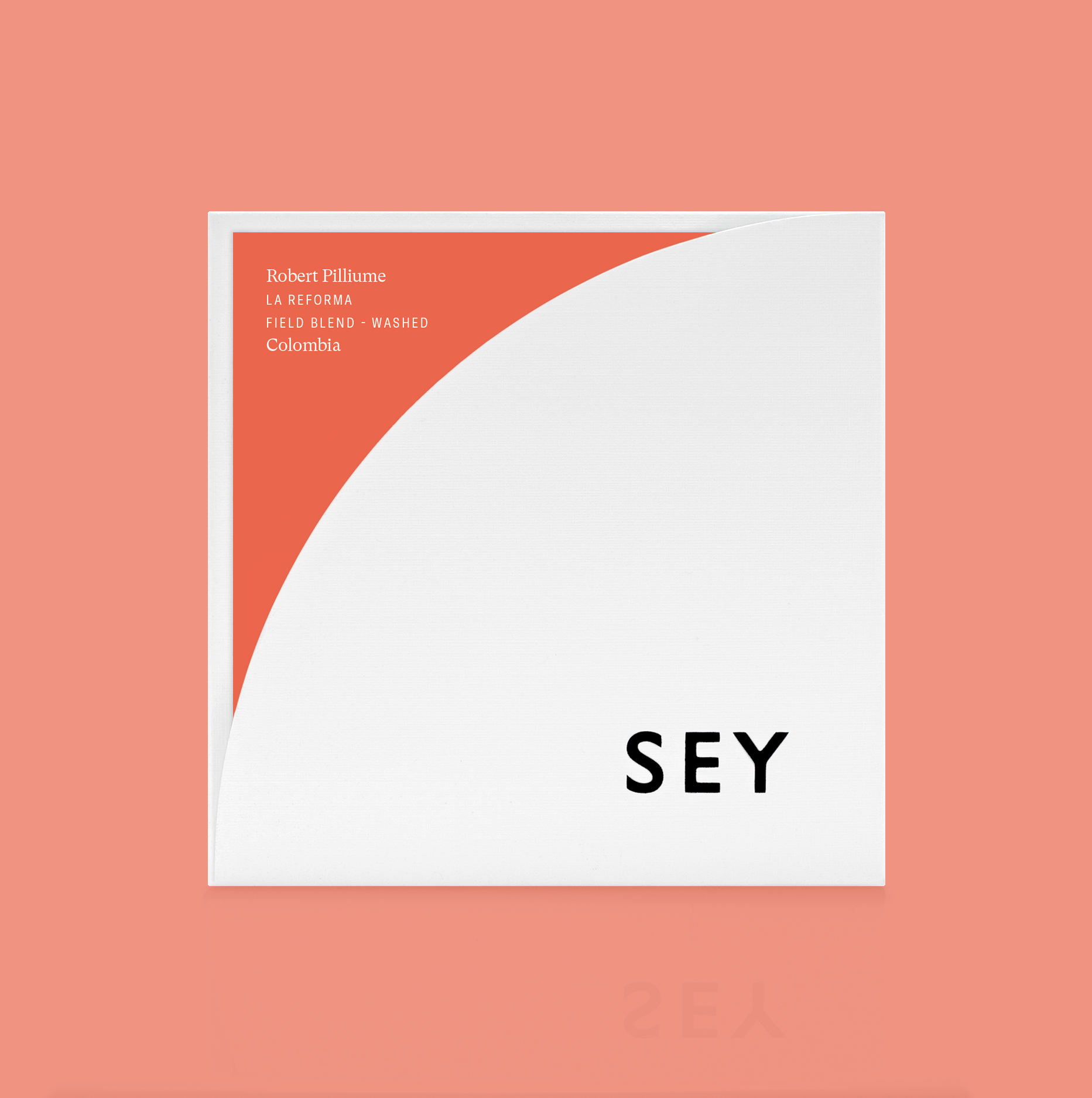
This is an excellent balanced selection from the region of Cauca. This is both a newer region as well as a new producer for us. In the cup we find a delicately fruited sweetness-forward profile, balanced acidity, and notes of citrus and cacao.
Tabi, V. Colombia, Castillo
Alto del Carmen, Páez, Cauca
1,750 masl
August, 2021
Hand picked at peak ripeness. Floated to further remove defects. Depulped. Dry fermented for 36 hours. Washed. Dried on raised beds for 20 days.
ABOUT ROBERT PILLIUME
Although Robert is a newer producer to us, he is a part of a group of producers called Matir that we met on our very first sourcing trip to Colombia, and have been working with for a number of years now. It has been amazing to watch these producers grow, add members to their group, reinvest in their farms, and experience the continued improvement of their coffees. Robert is a talented producer who has decided to separate out his Bourbon as a single variety selection this year. We will be releasing that in the coming weeks.
ABOUT VARIETY COLOMBIA
Variety Colombia (V. Colombia) is the result of the hybridization of Caturra with the Timor Hybrid. Developed over five generations by Cenicafé between 1968 and 1982, V. Colombia is high-yielding, and has excellent resistance to disease. This combination of traits makes V. Colombia a very popular variety in Colombia. It generally has decent cup quality potential, but with improved picking practices and fermentation experiments we are seeing quality improve dramatically.
ABOUT TABI
Tabi was introduced by Cenicafé in 2002. It is a variety produced by crossing Typica, Bourbon and Timor Hybrid. Like most other hybrids, one of the most important attributes of Tabi is its resistance to coffee leaf rust. However, because of its use of Bourbon and Typica genetics, it also displays good to very good cup quality and is one of the best hybrids we've tasted from Colombia.
ABOUT CASTILLO
Castillo is a hybrid variety. It is a cross between Caturra and a Timor Robusta. In 1962 research began to create coffee leaf rust resistant varieties. Leaf rust is responsible for decimating many coffee growing regions throughout history. Castillo was released in 1982, and has been widely adopted in Colombia to combat leaf rust; breathing new life into coffee production within the country. Castillo offers producers an option that requires less fungicides while still maintaining the potential for cup quality.
Pricing Details
Farm Gate (Local)
1.7MM COP/Carga
Farm Gate (USD)
~$4.60/KG
FOB
$7.15/KG
FOT
$10.81/KG
The cost of getting a coffee from cherry to beverage varies enormously depending on its place of origin and the location of its consumption. The inclusion of price transparency is a starting point to inform broader conversation around the true costs of production and the sustainability of specialty coffee as a whole.